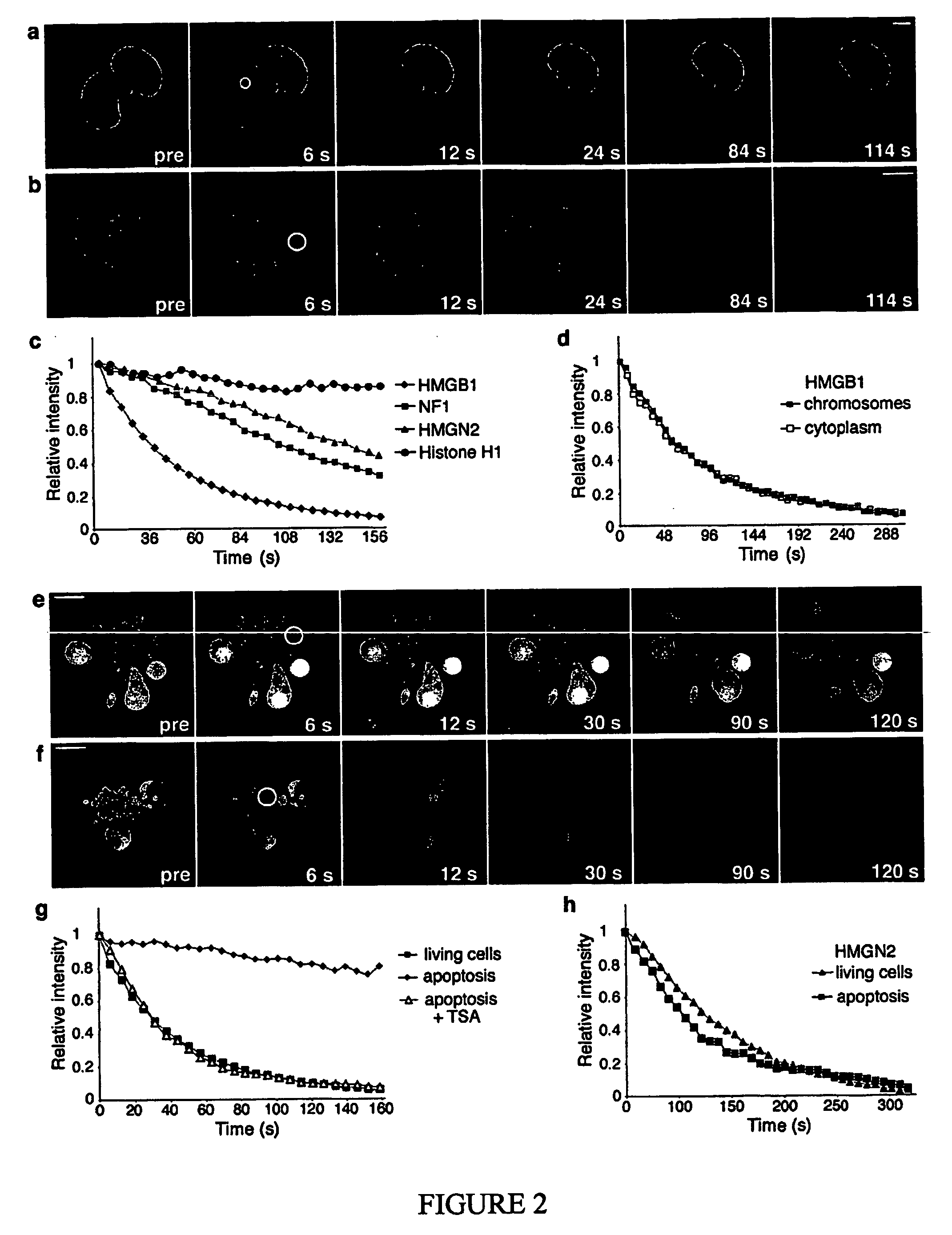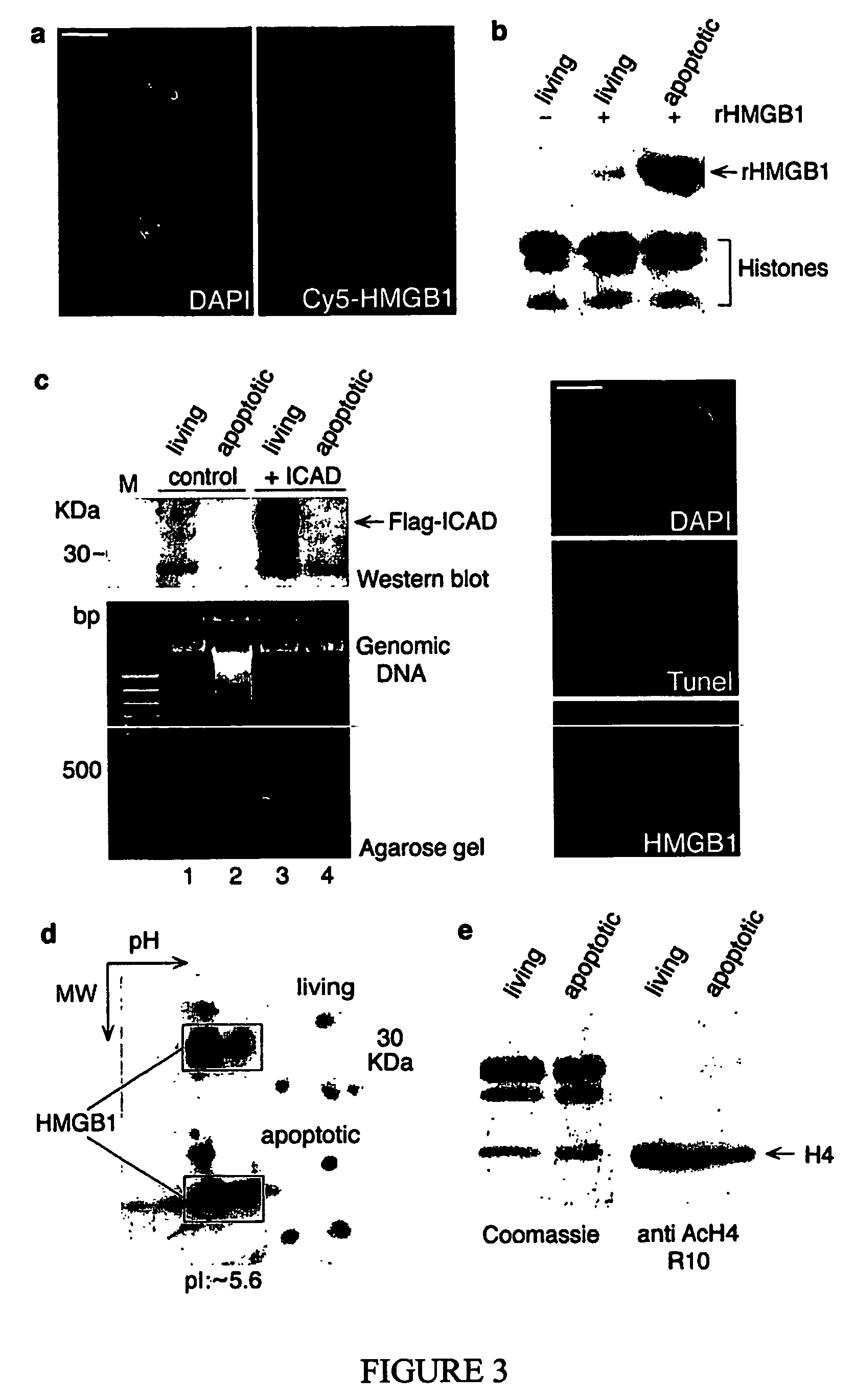Use of hmgb1 in the treatment of tissue damage and or to promote tissue repair
a tissue damage and hmgb1 technology, applied in the field of tissue damage treatment and hmgb1 in the treatment of tissue damage, can solve the problems of toxic shock, most cells (including lymphocytes, adrenal cells or kidney cells) are not able to secrete hmgb1, and fail to promote inflammation
- Summary
- Abstract
- Description
- Claims
- Application Information
AI Technical Summary
Benefits of technology
Problems solved by technology
Method used
Image
Examples
example 1
Materials and Methods
[0052] High mobility group proteins have been renamed recently. Previous / alternative names for HMGB1 are High mobility group 1, HMG1, HMG-1, amphoterin, and p30.
Cloning, expression and purification of HMGB1 protein andfragments
[0053] The plasmids HMGB1 and fragments thereof have been described (Müller et al., Biochemistry, 40, 10254-10261, 2001). Protein concentrations were determined spectroscopically using the method of Gill and von Hippel (Analyt. Biochem., 182, 319-326, 1989). The following extinction coefficients have been used for the native protein: Box A: A280=9.98 103 M−1 cm−1, Box B: A280=1.15 104 M−1 cm−1, AB, ABbt and full-length HMGB1: A280=2.14 104 M−1 cm−1.
Constructs and cells.
[0054] Plasmid pEGFP-HMGB1 was generated by inserting the coding sequence of the cDNA for rat HMGB1 into pEGFP-N1 (Clontech) using the EcoRI and SacII restriction sites. pEGFP-H1c, pEGFP-NF1, pEGFP-HMGN2, and pEF-flag-mICAD were generously provided by A....
example 2
[0072] The authors also demonstrated that HMGB1 has chemotactic activity on D18 mouse mesoangioblasts derived from fetal aorta cells (Minasi et al., Development. 129, 2773-83, 2002). Mesoangioblastic stem cells can be derived from mouse fetal aorta cells but also from umbilical chord cells, peripheral blood vessels and bone marrow ckit+ cells in post-natal mice. Once derived from these original cell populations with a proprietary method (described in Minasi et al., Development. 129, 2773-83, 2002), mesangioblastic cells, of which D18 are an example, are ‘naturally’ immortalized (they grow indefinitely). D18 cells serve as precursor of the following mesodermal tissue types: bone, cartilage, skeletal smooth and cardiac muscle, endothelial cells, monocytes, macrophages and osteoclasts. They are also capable of generating hepatocytes and neurons. Clone D18 was deposited according to the Budapest Treaty at CBA, Centro Biotecnologie Avanzate, Genova, Italy, N. PDO2005). Chemotaxis assays ...
example 3
Extracellular HMGB1, a signal of tissue damage, induces mesoangioblast migration and proliferation
Material and Methods
Cells
[0077] Bovine Aorta Endothelial Cells (BAEC) were isolated from a section of the thoracic aorta of a freshly slaughtered calf as described (Palumbo al., Arterioscler. Thromb. Vasc. Biol., 22, 405-11, 2002). Mesoangioblasts were isolated from the dorsal aorta of mouse embryos and from juvenile arteries as previously described (De Angelis et al., J. Cell Biol., 147, 869-78, 1999). After cloning, cells were expanded on a feeder layer of mitomycin C-treated STO fibroblasts. Clones showing the mesoangioblast gene expression pattern (presence of CD34, Kit, Flk1 and MEF2D) were used for the in vitro and in vivo experiments. Embryonic mesoangioblasts (clone D16) were transduced with a lentiviral vector encoding for nuclear LacZ, while adult mesoangioblasts (clone G1) were labeled with DiI and then injected into the femoral artery of mice.
HMGB1 and antibodies
[0078...
PUM
| Property | Measurement | Unit |
|---|---|---|
| radius | aaaaa | aaaaa |
| concentration | aaaaa | aaaaa |
| concentration | aaaaa | aaaaa |
Abstract
Description
Claims
Application Information
 Login to View More
Login to View More - R&D
- Intellectual Property
- Life Sciences
- Materials
- Tech Scout
- Unparalleled Data Quality
- Higher Quality Content
- 60% Fewer Hallucinations
Browse by: Latest US Patents, China's latest patents, Technical Efficacy Thesaurus, Application Domain, Technology Topic, Popular Technical Reports.
© 2025 PatSnap. All rights reserved.Legal|Privacy policy|Modern Slavery Act Transparency Statement|Sitemap|About US| Contact US: help@patsnap.com



